Stellar Evolution – The Birth, Life, and Death of a Star
During the day, some of us are lucky enough to be able to look up and see a clear blue beautiful sky and 'our' radiant Sun. During the night, most of us can gaze into the night sky and see lots of little bright points, stars. When we look up and see what we call 'our Sun', it can be hard to imagine that what we see also looks like this:

Image above: False-colour image of our Sun. Photographed by: Atmospheric Imaging Assembly of NASA's Solar Dynamics Observatory.
Most of you may look at this and instantly know that it's a Star. However, there are a fair amount of people who don't realize that our night sky is full of millions of Stars like this, smaller, bigger and some the same size. Some people don't know that the Sun is actually a star. I've got to admit that the image above looks nothing like what I see with the naked eye when looking up into the Sky:
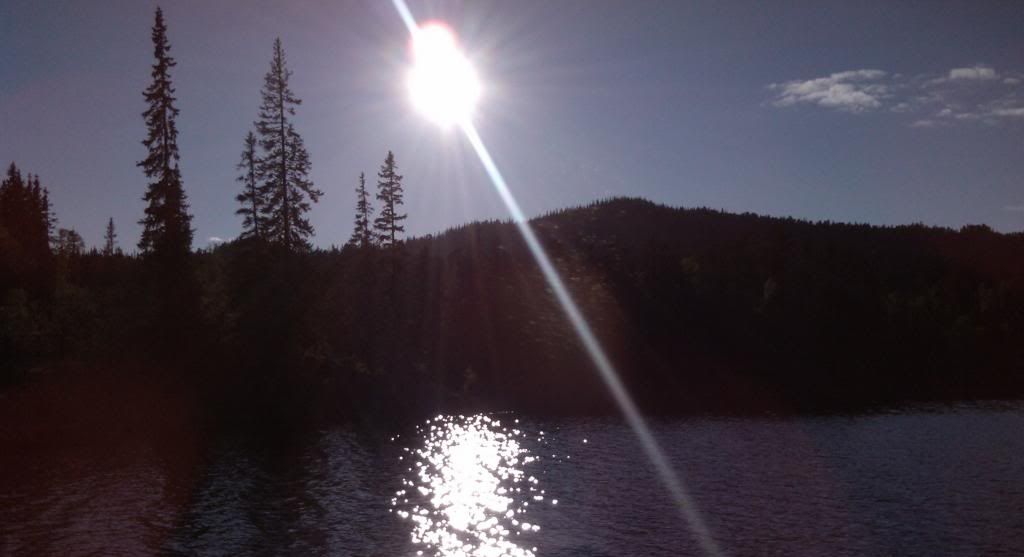
You've probably been told that staring directly at the Sun is bad for your eyes. However, we don't have to have uncomfortable staring contests with the Stars to try and get them to give up their secrets! After years and years of research, scientists have managed to find out quite a bit about the oh-so-secretive Stars without losing a staring contest.
Firstly, stars go through the same process that we do in the sense that they are born, live and then die. The difference is that they do it far more dramatically and take a much longer time doing it. Depending on the mass of the Star, the lifetime can range from a few million years to trillions of years!
The birth:
Naturally, this is where the comparisons between humans and Stars have to stop. The birth place of a Star is a huge, cold cloud of gas and dust, nebulae/nebulas.

Image above: Chandra, Hubble, and Spitzer image NGC 1952
These clouds begin to shrink, a result of their own gravity. As a cloud begins to shrink it gets smaller and the cloud breaks up into clumps. Eventually, these clumps reach high enough temperatures and get so dense that nuclear reactions begin. When the temperature reaches about 10 million degrees Celsius, the clump becomes a new star, a protostar. A protostar is not very stable. In order to live on, the protostar will need to achieve and maintain equilibrium, a balance between gravity pulling atoms towards the center of the protostar and gas pressure pushing heat and light away from the center. When a star can no longer maintain this balance, it dies.
How do we "know" any of this?
Infrared observatories such as ESA's Herschel space observatory (launched in May 2009) are able to detect the heat that comes from such stars that we are not able to see, and therefore give us the information we need to research further.

Image above: Artist's impression of the Herschel Space Observatory
If the critical temperature in the core of a protostar is never reached, it ends up as a brown dwarf, never achieving "star status". However, if the critical temperature in the core of a protostar is reached then nuclear fusion begins. It is no longer classified as a protostar. It's defined as a Star in the moment that it begins fusing the hydrogen in the core into helium. Simply put, nuclear fusion is a nuclear reaction where two or more atomic nuclei collide at high speeds and form a new type of atomic nucleus, in this case hydrogen forms helium.
"When a star can no longer maintain this balance, it dies."
At "Star Status", Stars spend the majority of their lives fusing hydrogen. So what happens when the hydrogen fuel is gone? Well, the Stars fuse helium into carbon and after a while, into even heavier elements. Maintaining the balance between gravity and gas pressure becomes very hard. The Stars eventually start to collapse on themselves. Before the Star's inevitable collapse, nuclear reactions outside of the core cause the dying Star to expand outwards and this is what we call the "Red Giant" phase. It really is as dramatic as it sounds.
How dramatic the death is, depends on the mass of the Star. Our Sun is expected to turn into a white dwarf Star. If a Star has a slightly larger mass than our Sun, it may undergo a supernova explosion and leave behind a neutron Star. If even larger, at least three times the mass of the Sun, the Star could even implode to form an infinite gravitational warp in space, a black hole!
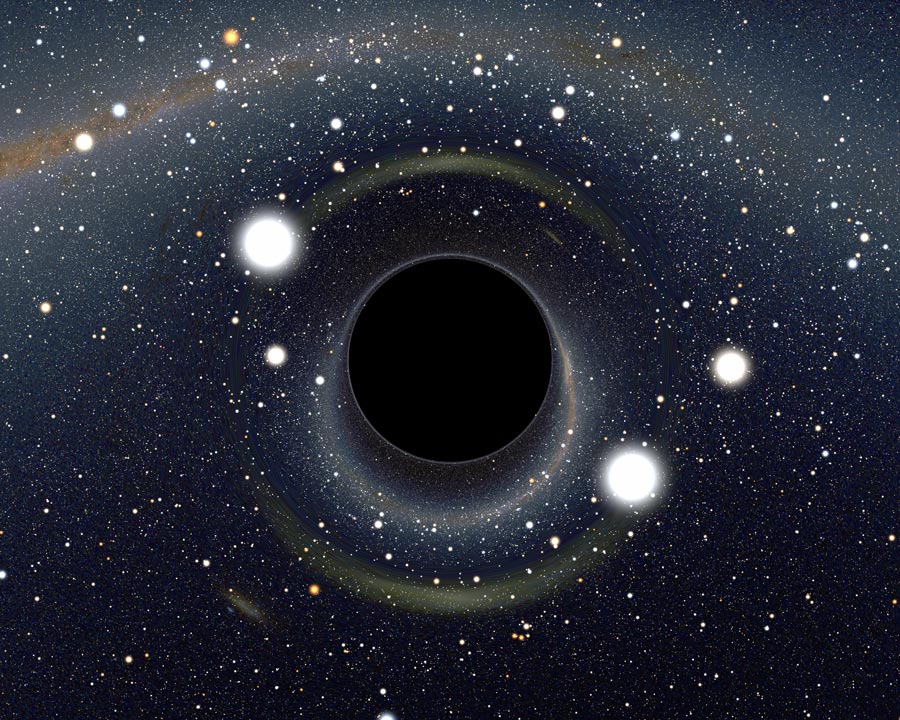
Image above: Computer generated image of a Black Hole

Stars live the majority of their lives in a phase that we call the Main Sequence. Our Sun is currently in the main sequence. However, not all the Stars in the Universe are in the main sequence. When we peer into the night sky, we see history. Perhaps you have spotted a few red Stars in the night sky? There's a chance that the Stars you saw were already dead when you saw them. Why? Well, these stars are so many light years away that it takes a very long time before the visible light reaches our eyes. When we look up, we are looking at what a Star used to look like X light years ago (X depending on how far away the Star is).
Some stars are only just beginning to form, others are in the Main Sequence and some have begun to die. Luckily for us, there is an amazing diagram, The Hertzsprung – Russell diagram that shows the relationships and differences between Stars:
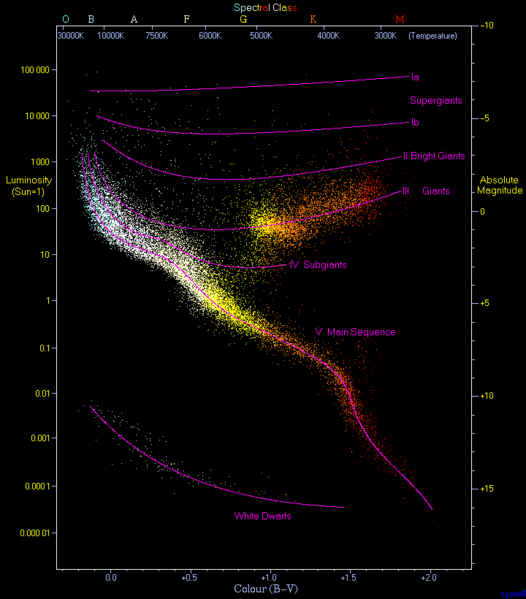
If you look at the HR-Diagram, you can see many dots. Each dot represents a Star. The Universe has many Stars in it; hence there are many dots on the diagram.
The diagram shows the temperature of the Stars and the Star's luminosity. The vertical axis represents the Stars luminosity. Luminosity is the amount of energy a Star radiates in one second, where every Star is compared to each other based upon our Sun. Our sun is in the yellow part of the main sequence, and therefore has luminosity 1, all other Stars are compared to ours in this sense.
The horizontal axis represents the Star's surface temperature, in Kelvin. Here we have higher temperatures on the left and lower temperatures on the right. Usually we go from lower to higher; however, it's more adequate to see that a star in the upper left corner of the diagram is both hot and bright. A star in the upper right corner of the diagram is both cold and bright, what kind of star would this be? Take a look at the diagram. Happy Star hunting!
Sources:
http://www.esa.int/esaKIDSen/SEMY06WJD1E_OurUniverse_0.html
http://www.nasa.gov/audience/forstudents/9-12/features/stellar_evol_feat_912.html
http://aspire.cosmic-ray.org/labs/star_life/starlife_main.html
http://essayweb.net/astronomy/blackhole.shtml
http://www.spitzer.caltech.edu/images/2857-sig09-009-NASA-s-Great-Observatories-View-of-the-Crab-Nebula
http://apod.nasa.gov/apod/ap101207.html
http://www.esa.int/Our_Activities/Space_Science/Herschel
http://en.wikipedia.org/wiki/File:Herschel_Space_Observatory.jpg
Calm down, it's only Science
In the late 1960′s, gamma-ray bursts were discovered. However, this was not an intentional discovery. They were discovered by the U.S. Vela satellites that were actually built to detect gamma radiation pulses emitted by nuclear weapons tested in Space! Why? Well, the USA suspected that the USSR might attempt to conduct secret nuclear tests after signing the Nuclear Test Ban Treaty in 1963. However, that wasn't the case.
On the second of July in 1967, the Vela 4 and Vela 3 satellites detected a flash of gamma radiation unlike any known nuclear weapons' signature. The team at the Los Alamos Scientific Laboratory (led by Ray Klebesadel) were rather uncertain of what had happened. However, they didn't consider the matter urgent and filed the data away for investigation. As more Vela satellites were launched with better instruments, they continued to find these gamma-ray bursts in their data. They analyzed the different arrival times of the bursts as detected by different satellites and the team was able to determine rough estimates for the sky positions of sixteen bursts.
So what were these mysterious outbursts? Was America about to get bombed?
Well, America wasn't about to get bombed, so that's one less thing we have to read about in our history books! Instead, it was suggested that the gamma-ray bursts happened inside of the Milky Way Galaxy. This theory was found incorrect when in 1991, the Compton Gamma Ray Observatory, and its' Burst and Transient Source Explorer instrument was launched. This instrument provided data that showed an absence of gamma-ray bursts in our galaxy and therefore, they had to be beyond our galaxy.
Alright, well, get to the point. Where are gamma-ray bursts?!
Gamma-ray bursts are flashes of gamma rays (electromagnetic radiation of high frequency) that are associated with very energetic explosions that have been observed in distant galaxies. They are known to be the most radiating electromagnetic events in the Universe. The bursts can last from ten milliseconds to several minutes (a typical burst lasts 20-40 seconds). This is usually followed by an "afterglow" emitted at longer wavelengths such as X-ray, ultraviolet, optical, infrared, microwave and radio.

Picture above: An Artist's illusion that shows the life of a massive star as nuclear fusion converts lighter elements into heavier ones. Sooner or later, the process comes to and end and the star will collapse and form a black hole. It is theoretically possible that a gamma-ray burst can be formed during the collapse.
There are two different types of Gamma-ray bursts, long and short:
Long gamma-ray bursts: Most of the gamma-ray bursts we have observed, have lasted for longer than two seconds and are then classified as long gamma-ray bursts. Long gamma-ray bursts tend to have the brightest afterglows and are studied in much greater detail than short gamma-ray bursts. From what we have observed, most long gamma-ray bursts are a result of a galaxy with rapid star formation, a core-collapse supernova and generally the deaths of massive stars.
In March 28 2011, there was a very unique gamma-ray burst (GRB 110328A), one that lasted more than two and half months! The event is interpreted as a supermassive black hole devouring a star (probably a white dwarf) and emitting its beam of radiation towards Earth.
Short gamma-ray bursts:
Gamma-ray bursts that have a duration of less than two seconds are classified as short gamma-ray bursts. There are not as many as these as long gamma-ray bursts, only 30 % of those we have observed. Many short gamma-ray burst afterglows have been detected and most of them have been found in regions of little (or non) star formation (such as large elliptical galaxies and the center regions of large galaxy clusters). There have been none that are associated with supernovae. It is believed that they originate from the mergers of binary neutron stars or a neutron star with a black hole.
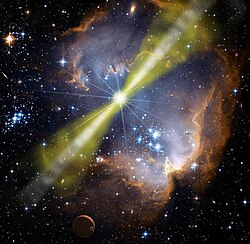
Picture above: An Artist's illusion of a gamma-ray burst. The energy from the explosion is shown as two oppositly-directed jets.
So there we have it, no nuclear tests, no blowing up the USA, just a wonderful and fascinating gamma-ray burst!
Sources:
http://astro.berkeley.edu/research/grbs/grbinfo.html
http://www.nasa.gov/mission_pages/swift/bursts/
Illustrated Science Magazine
Where are they?!
Where are they?!:My most recent article regarding extra-terrestrial life. I am now writing for this website, but I shall continue to post here too.
Happy Kirchhoff Day! Wait, what? Who? How do you even pronounce...
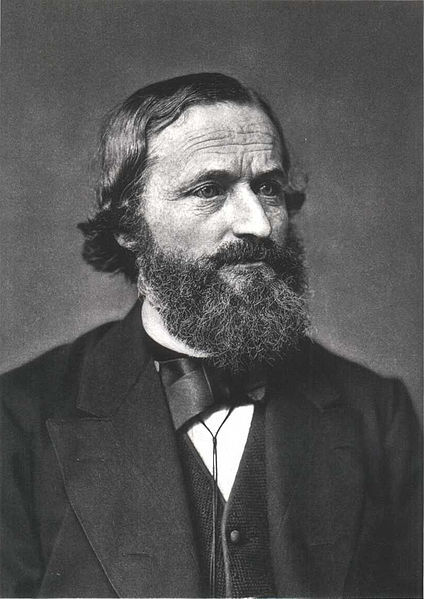
Happy Kirchhoff Day!
Wait, what? Who? How do you even pronounce that?
With great difficulty!
Gustav Robert Kirchhoff was born on the 12th March (that's right, today!) in 1824 and died on the 17th October 1887. He was a German physicist who contributed to the fundamental understanding electrical circuits, spectroscopy, and the emission of the black-body radiation by heated objects.
In 1862, he coined the term "black body" radiation, and the Bunsen-Kirchhoff Award for spectroscopy is named after him and his colleague, Robert Bunsen.
Kirchhoff also has a fair amount of laws named after him:
FOR SCIENCE!
How do we hear?
How do we hear?:Good article, explains the basics of how we hear. Just going to add that sound waves are mechanical waves that can only travel through solids, liquids and gasses. Unlike electromagnetic waves, that can travel through a vacuum. Light is an example of an electromagnetic wave, as we can see the sun and stars.
New evidence of underground water on Mars!
New evidence of underground water on Mars!Glasses won't do you any good..
..if you wish to see the planets with detail! They may help you by preventing you from being wiped off of the face of the Earth by a bus, but when it comes to inspecting the Moon and making conspiracy theories to as why there appears to be a face on the Moon.. You’ll need a telescope!
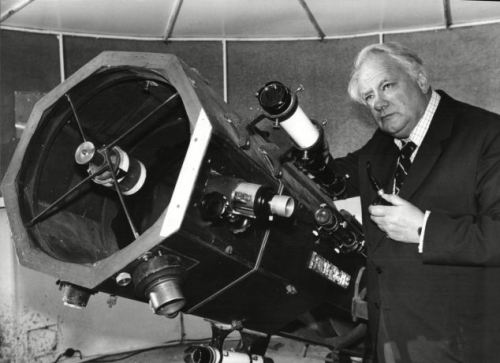
In the picture above we see the great Sir Patrick Moore with his 15ins telescope at his house in Farthings, Selsey, 30 years ago. I’m going to assume that most of you have heard of Patrick Moore, especially after the unfortunate, yet inevitable, death. You may also know that he was an English amateur astronomer that was indeed quite fond of telescopes.
Here’s a video on the many Telescopes of Sir Patrick Moore
However, this article isn’t focusing on Patrick Moore, but more on how telescopes work and the different types of telescopes. If you wish to read up on him, then this is quite a good article.
Different types of Telescopes? Surely you’re not telling me that there’s MORE than one type of Telescope?!
You have much to learn, young Padawan. There are many different types of telescopes: Optical telescopes, Radio telescopes, X-ray telescopes, Gamma-ray telescopes, High-energy particle telescopes, etc. I'm going to focus on Optical telescopes and there are three main types of these: Refractors, reflectors and the compound/catadioptric telescope.

The type of telescope is determined by the part of the telescope that gathers light. This part is called the objective. Refractors use a glass lens as its objective, so that the glass lens is at the front of telescope and light is bent/refracted as it passes through this lens. A reflector uses a mirror instead as its objective. The mirror is close to the rear of the telescope and light is bounced off/reflected off as it strikes the mirror. Compound telescopes use both mirrors and lenses to collect and focus the incoming light.
Which one is the best telescope for me?
Well, it depends on what you’d like to see. Refractors are known for sharp, detailed and well-contrasted images. They are said to be best for viewing the moon and planets. A small refractor of 60 mm to 80 mm aperture will make a good starting scope to observe the Moon and planets. They’re portable and inexpensive and a refractor is possibly the best choice if you will be doing most of your observing from the city or suburbs, where there is light pollution.
Newtonian reflectors are great-all around scopes that aren’t too expensive either. You can view both planetary and deep-sky viewing; however, these scopes are more fragile and require more maintenance than the others.
Compound telescopes/catadioptrics are said to be the most versatile telescopes and have the best all around, all-purpose design. They tend to be very portable and compact, and if you use them in the right situations (away from light pollution with a clear night sky), then you should be able to see excellent views of the Moon, planets and faint deep sky objects such as clusters, galaxies, nebulae comets, etc. This is probably the most suited telescope for astrophotography, yet you’ve got to pay the slightly expensive price for one of these.. However, to quote spacephilosopher "You lose your house, but you get the Universe".
 Unfortunately, telescopes don’t float around in the air and position themselves perfectly for us… yet. They need to be supported by some type of stand, or mount, unless you feel like doing a bit of weight-lifting. There are two basic types of telescope mounts: Alt-azimuth and Equatorial.
Unfortunately, telescopes don’t float around in the air and position themselves perfectly for us… yet. They need to be supported by some type of stand, or mount, unless you feel like doing a bit of weight-lifting. There are two basic types of telescope mounts: Alt-azimuth and Equatorial.
The alt-azimuth mount is similar to a camera tripod, it uses a vertical (altitude) and a horizontal (azimuth) axis to locate an object. This type of mount is simple to use, but it doesn’t track the motion of stars properly. When it tries to, it produces a “zig-zag” motion instead of a smooth arc across the sky. This makes this type of useless for taking photographs of the stars.
The equatorial mount uses two axes (right ascension, or polar, and declination) aligned with the poles to track the motion of an object across the sky. Instead of being orientated up and down, it’s tilted at the same angle as the Earth’s axis of rotation.
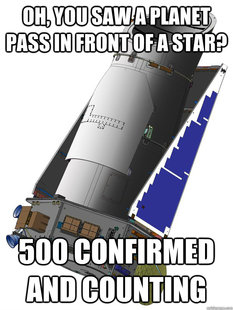
Sources:
http://www.souledout.org/rsl/telescope/choosingtelescope.html
http://science.howstuffworks.com/telescope5.htm
http://en.wikipedia.org/wiki/Telescope
The Sky at Night book - Sir Patrick Moore & Chris North (Worth buying)
http://www.jb.man.ac.uk/astronomy/nightsky/telescope.html
Scientists create "negative temperature" system
Scientists create "negative temperature" systemThermal Physics!

When seeing this picture you may think wow that's gotta' be painful! and you're right! It is indeed painful but it's bearable. Why?
Well, pressure is defined as the ratio of force to the area over which that force is distributed.
P = F/A
One can also say that pressure is force per unit applied in a direction perpendicular to the surface of an object.
Looking back at the picture, we can see that the area is spread out enough so she can balance. If we pressed one single finger down on one spike, it would hurt much more than when we use our whole hand. Then again, both of those options would be painful and probably not the brightest thing to do!
'Pressure' is a key term in Thermal Physics, along with 'Temperature' and 'Heat'. Thermal physics is the combined study of thermodynamics, statistical mechanics and kinetic theory.
We’re pretty much obsessed with Temperature, it’s an important part of our lives. I don’t know about you, but when I wake up to see it’s -10 Celsius outside it certainly makes me grumble. We’re so used to just looking at a thermometer that we might not stop and just wonder, how does that actually work?
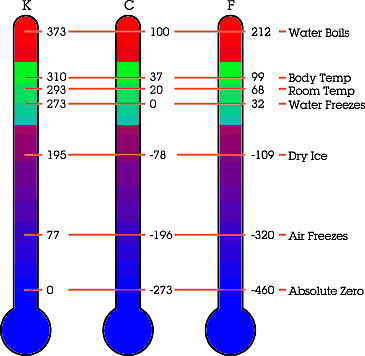
Well, when two objects are in contact with each other, they will eventually both have the same temperature. This can be explained by the zeroth law of thermodynamics/Law of equal temperatures: An object that cannot change it's own temperature, will eventually reach the same temperature as its surroundings. This is the idea behind our thermometers.
If you're not familiar with Celsius than you may be familiar with Fahrenheit instead. However, most of us, if not all, are familiar with Kelvin. Absolute zero is defined as a temperature of 0 Kelvin, which is equal to -273.15 Celsius or -459.67 Fahrenheit.
So let’s say you’re more fortunate than I am, with a thermometer that shows a higher temperature. You might say you’re “warm”. In Physics this word is used differently, it’d be more accurate to say: "I've got too much internal energy right now!” In my case it’d be “I really really reaaaallly need more internal energy, help”.
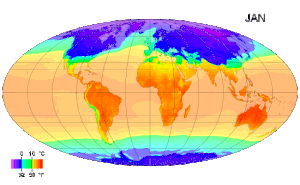
Picture above: A map of global long term monthly average surface air temperature.
What CAN we say about heat, what IS heat?
Heat is defined as energy transferred from one body to another by thermal interactions. Heat has the symbol Q and the SI-unit (for those who don't know what that is: http://en.wikipedia.org/wiki/International_System_of_Units) J for Joule.
Heat flows from systems of higher temperatures to systems of lower temperatures. When two systems come into thermal contact, they then exchange energy through the microscopic interactions of their particles.
Heat is also necessary when we use the first law of thermodynamics. Which states: The increase in internal energy of a closed system is equal to the difference of the heat supplied to the system and the work done by it:
ΔU = Q - W
Now that we’ve established that heat flows from systems of higher temperature to systems of lower temperatures, can it be reversed? That’s where the Second law of Thermodynamics comes in: Heat cannot spontaneously flow from a colder location to a hotter location.
We also know that energy cannot be created nor can it disappear. So what happens? We have different energy qualities. High energy qualities and low energy qualities. The problem is that a low energy quality cannot turn into a high energy quality, what can happen is that energy is used and transformed and after a while turns into energy with a lower quality. It does not disappear but after a while it pretty much becomes unusable. This is one of the theories of the Universes ‘death’, that in many many maaaany years to come, there will not be any high quality energy left, only unusable energy with a too low quality.

Sources:
http://www.stuffintheair.com/thermometerpictures.html
http://science.nationalgeographic.com/science/enlarge/universe-death.html
http://en.wikipedia.org/wiki/Thermodynamics#Laws_of_thermodynamics
http://en.wikipedia.org/wiki/File:MonthlyMeanT.gif
Physics book: H.Aschehough @ Co. [W. Nygaard] 2007
Second "anniversary"!
Looking back in my archive, it seems my first blog post on this blog was on the 10th of December around 11.30 pm. Not quite sure why I was creating a Science blog at 11 pm…
So here I present to you… My first post!
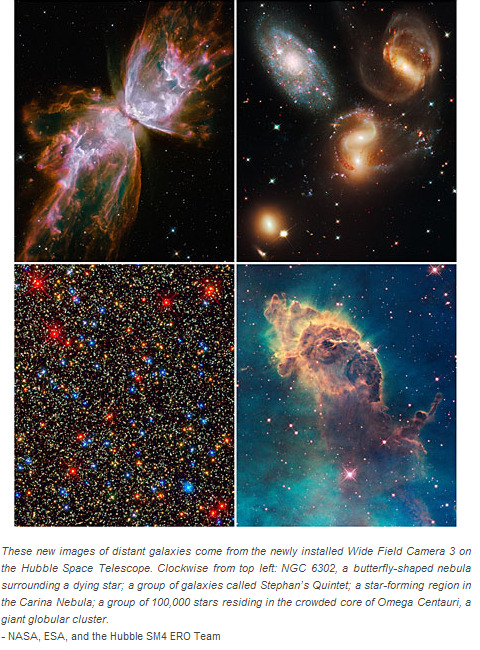
I can only hope that my articles have improved since those two-paragraphed-full-of-nonsense articles. Speaking of, sorry about the lack of articles, more will come.
Newton's laws of motion
After being (very unexpectedly, may I add) on Tumblr’s radar and receiving many new followers, I feel as popular as Isaac Newton, if only I had his brain! We’ve all heard of him but do we all know what is he actually known for? Laws!
Yes you heard me, laws. More specifically, Newton’s laws of motion.

Picture above: Isaac Newton (1643-1727), the man that changed our understanding of the Universe with his three laws of motion.
Before learning these laws, we might want to know what a force actually is and what it does!
A force can change the speed of an object and it can also change the form of the object. The unit for force is (big suprise) N, for Newton. We can say a force is any influence that causes an object to change, for example it’s movement, direction or even geometric construction could change.

Picture above: Forces can also be described as a push or a pull on an object. For example gravity or magnetism.
Another thing that can be handy to know, is what a vector quantity is. As written in one of my past posts about time: Scalars are quantities that are fully described by a magnitude alone (Time and Mass), whilst Vectors are quantities that are fully described by both a magnitude and a direction (Velocity and Force).
The first law:
If the net force, which means the overall force acting on an object, is zero, then the velocity of the object is constant.

If an object is stood still, then the net force will equal zero. Why? Imagine a table placed on the ground, there will be the gravity force keeping the table on the ground and a force coming from the ground up against the table (called the Normal Force: http://en.wikipedia.org/wiki/Normal_force). These two forces will be of the same size, in opposite directions.

Picture above: Fn = Normal Force
As the object is stood still, Newton’s first law says the net force is equal to zero.
A video explaining Newton’s first law: http://www.youtube.com/watch?v=5-ZFOhHQS68
Newton’s second law:
This law states that the net force of an object is equal to the mass of the object and the acceleration. When an object is influenced by forces, then the object has an acceleration in the same direction as the sum of the forces (the net force).

A video explaining Newton’s second law: http://www.youtube.com/watch?v=P5OSVfL_BtA&feature=relmfu
Newton’s third law:
When two bodies exert forces on each other, the forces will be equally big and in opposite directions. So if a first body exerts a force F1 on a second body, then the second body will at the same time exert a force on the first body. F1 and F2 are then equal in magnitude and opposite in direction.
So next time you give someone a hug or… even punch them if you feel that angry, just remember Newton’s third law!
A video explaining Newton’s third law: http://www.youtube.com/watch?v=NfuKfbpkIrQ
Sources:
Physics book: H.Aschehough @ Co. [W. Nygaard] 2007
http://www.physicsclassroom.com/class/newtlaws/u2l3a.cfm
http://en.wikipedia.org/wiki/Newton’s_laws_of_motion
Pictures:
http://en.wikipedia.org/wiki/File:Force_examples.svg
Have you ever heard of the amazing and inspirational Carl...
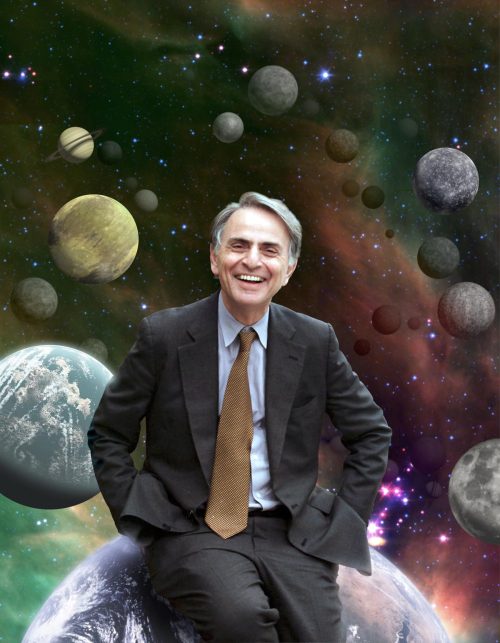
Have you ever heard of the amazing and inspirational Carl Sagan?
Carl Sagan was an American astronomer, astrophysicist, cosmologist, author and science communicator. Why inspirational? Well, there are many intelligent beings in the world but not all of them are capable of communicating and appealing to the people like Carl Sagan did. Carl Sagan did this through his books and various media (The Cosmos being especially popular).
Why bring him up now?
Well, today, along with many other humans, Carl Sagan was born 78 years ago on November 9th 1934. So happy Carl Sagan Day!
"For small creatures such as we the vastness is bearable only through love." - Carl Sagan.
"If you wish to make an apple pie from scratch, you must first invent the Universe". - Carl Sagan.
I recommend all of you to listen to this video by Symphony of Science "A glorious dawn ft. Stephen Hawking": http://www.youtube.com/watch?v=zSgiXGELjbc
Picture source:
http://blogs.agu.org/wildwildscience/2010/12/20/carl-sagan-passed-14-years-ago-today-his-legacy-endures/
The difference between Speed, Velocity and Acceleration
Aren’t all of them the same? No, they’re quite different actually. The confusion lies mostly around the fact that both Speed and Velocity are measured by m/s (meters per second) and Acceleration measured by m/s^2. This does not mean they’re the same though.
Speed is the rate of motion/rate of change of position. It doesn’t have a specific direction. Therefor, speed is a scalar quantity expressed as distance moved per unit of time. Speed is the magnitude component of velocity. Velocity contains both the magnitude and direction components and is a vector quantity.
When we talk about how fast something moves, we mean how far it can move in a given time, whilst when we talk about acceleration, we mean how the velocity changes in a given time.
How do we measure speed?
Galileo Galilei is said to be the first to measure speed by considering the distance covered and the time it takes. He defined speed as the distance covered per unit of time. As an equation:

Here, v is velocity, d is distance and t is time.
This equation is simple but very useful. You can find the velocity, distance and time by using this equation (providing you know 2 of the components). However, as this equation is simple, the velocity has to be constant (the speed is always the same). This might seem unrealistic, but it’s very precise.

Picture above: A graph showing the distance, time and constant speed. The time is on the X-axis, whilst the distance is on the Y-axis. We usually use m/s for velocity (meters per second).
Velocity as you most likely know, cannot always be constant. This is when instantaneous speed comes in. Instantaneous speed is the velocity of an object at a certain time. The graph below is an example of measuring instantaneous speed.

In the picture above there are tangents drawn across the points in time, in order to find the speed. You then calculate (for example, here they divide Delta Xp with Delta Tp on both tangents) the slope for the new tangent(s) you have drawn and get the instantaneous speed. There are faster ways to calculate the instantaneous speed but those require more advanced equations and mathematics.
When the speed varies with time, the movement is accelerated. You can have both positive and negative acceleration. For example, when a car stops, the velocity sinks and therefor the acceleration becomes negative. When a car increases it’s velocity, the acceleration becomes positive.
In Physics, we also use constant acceleration. This equation can be used to find the acceleration, start velocity, end velocity and time:

Usually there is a line above the “a” to point out that it’s the constant acceleration.

Picture above: Here we see the different types of graphs for Position, Velocity and Acceleration.
Sources:
http://www.intmath.com/kinematics/1-velocity-graphs.php
http://en.wikipedia.org/wiki/Speed
http://www.edinformatics.com/math_science/acceleration.htm
http://homepages.wmich.edu/~kaldon/classes/ph113-4-lectures.htm
http://oscience.info/physics/constant-acceleration-constant-acceleration-equations/
jtotheizzoe: shortformblog: justinferguson9: "Sometimes you...
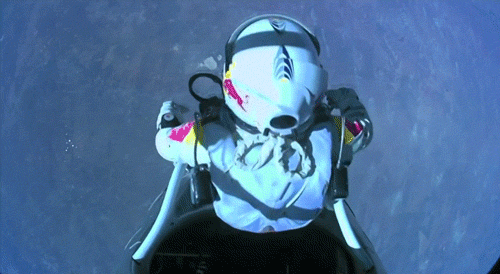
"Sometimes you have to go really high to realize how small you are." - Felix Baumgartner
A man, falling into a far deeper void than any of us have ever experienced.
And coming out the other side, unscathed.
Amazing.
Submitted by: keplereleven.tumblr.com How I feel about...

Submitted by: keplereleven.tumblr.com
How I feel about Chemistry.
Has the Voyager really exited the Solar System yet?
Has the Voyager really exited the Solar System yet?Tick Tock, there goes the clock!
One of the greatest questions of all time, has to be “what IS time?”.
Is time defined by what we see on our mechanical clocks? Does time stop? Does time have a constant speed? Does time have a beginning and end? There are countless questions we can ask about time but what are the answers?
We are all familiar with time, our whole lives revolve around it. Yet, we don’t know everything there is to know about it. We can start by measuring time.
Hours, minutes and seconds were first adopted by the Babylonians, some say they even invented time. However, they could have never actually invented time but they made a system for time. The days were 12 hours and the nights 12 hours. The hours were broken down into 60 minutes and those that needed even more precise numbers, they broke down those 60 minutes into 60 equally big parts (60*60=3600 seconds).
To measure the time they used the human heart-beat, one second was the duration of time between the two heart-beats of a healthy human (in a relaxed state).
The first mechanical clocks were invented in the 1200s. They had a pendulum that swung back and forth. There are different types of clocks and therefor the clocks we use in our everyday lives are referred to as mechanical clocks. Biological clocks are quite important to us, the heart-beat is an example of a biological clock and even a woman’s menstrual cycle is a biological clock (probably not the kind of clock you’d want to watch).
Today we also use atomic clocks, they’re so precise that they will either speed up or slow down by one second in a million years. They’re based on specific type of radiation from the Cesium atom. The Second is now defined by this radiation and perhaps in some years we’ll invent even better clocks with yet another definition of time. However by current definition, a second is the duration 9,192,631,770 cycles of radiation in a transition, or energy level change, of the Cesium atom.
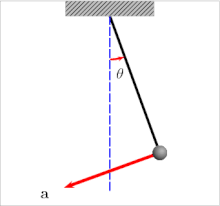
Picture above: A pendulum showing the acceleration (a) and velocity (v) vectors.
Is time a vector or scalar quantity?
Firstly, scalars are quantities that are fully described by a magnitude alone (Time and Mass) Vectors are quantities that are fully described by both a magnitude and a direction (Velocity and Force).
Time is said not to have any direction, only magnitude. Therefor it is a scalar quantity.
Another question that tends to puzzle humanity is about space and it’s length. Is space endless? Has it always existed? Is space just the distance between two objects or is it something more? If you took away ever last atom and object, would there still be space or would there be nothing? Even then you can ask, what IS nothing? Does ‘nothing’ exist?
One thing is for sure, we can measure length. There are many different measurements for length all over the world; Feet, yards, centimeters, etc. However the result is always the same, no matter how you measure. The distance that is there, is there and will not change no matter which measurement you decide to use. However, the international measurement tends to be in meters. The meter is defined by the movement of light.
A meteris the length of light moving in free space during a time interval of 1/299 792 458 of a second.
Why do we use light to define certain measurements? The light speed in a vacuum is the same no matter when or where we measure and it doesn’t even matter if the light source is moving relative to us.
It’s extremely hard to be 100% precise when talking about length and all length measurements are a little uncertain. Your height for example, let’s say your height is 162 cm. That means you’re between 161,5 cm and 162,5 cm. However, we’re getting better and better at being even more precise and inventing new measurements that will help us in the future.
Sources:
http://www.physicsclassroom.com/class/1dkin/u1l1b.cfm
Physics book: H.Aschehough @ Co. [W. Nygaard] 2007
Mars Rover Finds Ancient Streambed
Mars Rover Finds Ancient Streambed:"NASA's Mars rover Curiosity has discovered what appears to be an ancient streambed, suggesting that water once flowed in large volumes — perhaps hip-deep in places — across the Martian surface."
This could even suggest that there was once life on Mars!
Shoot for the stars and try not to burn up!
What’s the first thing you think about when you think of the Second World War or the Cold War?
Hitler? Evil? Stupidity? Death? Well, obviously I’m not here to talk about War, I’m here to talk about rockets! Yes, rockets!
During the Second World War, the development of rockets was greatly improved. Rockets have been used since the 13th century, both for fireworks and for the military. However, it was the German’s military rockets, V1 and V2, that were made in the 1930-1940s, that helped us take a big step towards the technology that today, could get us off of the face of the Earth. In the 1950-1960s the main usage of rockets was to transport atom bombs, which is not so much the case today. Rockets led us into the Space Age and the race for the Moon.

Picture above: A damaged V1 found by the Allies.
Today, rockets are used for much more than that one task of destroying. They are now used for fireworks, weaponry, ejection seats, satellites, human spaceflight and space exploration! However, it’s certainly not as simple as just imagining up a rocket and flying to the Moon. It’s extremely complicated, dangerous and expensive. Very few rockets are made to send humans to Space, mostly because of the huge risk of putting astronauts near the highly explosive fuel and not to mention the price!
So what happens when a rocket launches? Newton’s third law is very useful here. Basically, the fuel gets thrown out one way, whilst the rocket moves in the opposite direction. Different fuels are used, either in solid or fluid form. “When two bodies interact by exerting force on each other, these forces (action and the reaction) are equal in magnitude, but opposite in direction.”
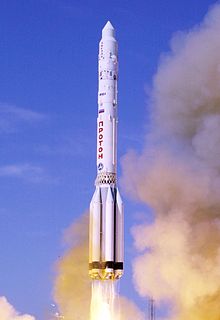
Picture above: Proton Rocket heading for Space.
Besides the risks and money, what’s stopping us? Well, it’s not as simple as applying Newton’s third law and launching off into Space. We’ve got gravity to think of! It’s easier to escape the Earth’s gravitational pull and settle into the Earth’s orbit then it is to go further into Space, especially if we’re wanting to land on the surface of another celestial object.
There are five phases of space exploration with rockets as we know it:
Phase 1: Launching the rocket up into Space, escaping the Earth’s gravitational pull. For even a satellite to get into the Earth’s orbit, it must have a speed of over 28 000 km/h.
Phase 2: The easiest way to get as far away as possible from the Earth and into Space, is to fly past a planet, asteroid or comet (using the gravitational pull of the object to bend around and fly on). This need a speed of 40 320 km/h.
Phase 3: It’s quite complicated to send a spacecraft or satellite into the orbit of a celestial object. You would need exact calculations, to see at what exact speed you would need to enter the orbit and not fly straight past it, or get sucked in by the gravitation pull. You would also need other types of rockets (attached to the main rocket) to help slow you down, or even boost your speed.
Phase 4: Landing on the surface of a celestial object is MUCH harder than flying around it. In order to land successively, you’d need very exact controlling, safety and to be slowed down.
Phase 5: Returning home is quite complicated too, especially if you’re to land on a planet and pick up samples, you’d need extra fuel for the way back home and the extra weight makes the rocket heavy and expensive.
Whatever the expense, it’s always useful, FOR SCIENCE!
Sources:
http://en.wikipedia.org/wiki/Newton’s_laws_of_motion
http://en.wikipedia.org/wiki/Rocket
http://www.historylearningsite.co.uk/v_weapons.htm
http://en.wikipedia.org/wiki/Rocket_launch
Illustrated Science
Pack your bags kids, we're going to live on the Moon!
50 years or more ago, we hardly knew anything about the Moon, simply that it is there. We can compare it to as we ‘know’ gravity today, we don’t know much about it, just that it’s there and is quite important for us. However, I doubt another War will help us understand gravity.
The Cold War helped us understand the Moon quicker, when two superior countries fought to be the first on the Moon. Both the USA and Soviet Union received many brilliant Scientists and research from Germany when WW2 ended. They both fought hard but of course, only one of them could be the first and that was the USA.
From the day that we first landed on the Moon, we have been going back and forth but never actually staying there for very long. Some may call this a waste of time and money, some even suggesting that we could instead buy a new football stadium, as this is clearly more important. However, we have been collecting more and more important data from the Moon and have been planning how we can colonize the Moon.
NASA has plans for a Moon base for 2020, however they are criticized for investing so much in Mars, that we won’t be able to get to the Moon before Mars. However, USA isn’t the only hope we have for getting to the Moon as we are already developing the right technology that we need for the colonization of the Moon.
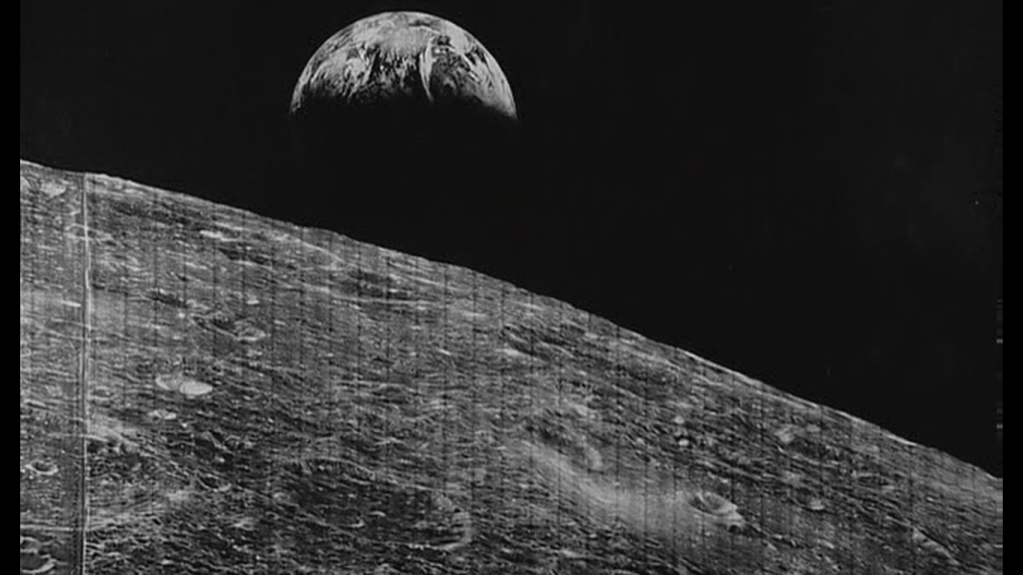
There are both advantages and disadvantages when it comes to the colonization of the Moon.
Advantages:
- Valuable resources, such as iron, aluminium, water (if we’re able to utilize it), oxygen and hydrogen and helium-3. However this can also be a disadvantage, who is to claim these resources? Does America think they claim the Moon because they landed on it first? That won’t go down well.
- As it’s so close to the Moon it should be easy to contact the Earth and travel back and forth.
- We could launch rockets from the Moon to Mars with locally-manufactured fuel. It may be easier to launch from the Moon, as the Moon’s gravity is lower, requiring a lower escape velocity.
- If the Moon were colonized, it could prove that humans can survive in low gravity and that would be valuable to know for Mars.
- At the Lunar North Pole, there could be eight hours on sunlight per day during the local summer and therefore there could be a farm, with the crops rotating in and out of the sunlight for the entire summer, providing food.
Disadvantages:
- We couldn’t rely on Solar Power because of the long lunar night and the huge temperature swings (123c to -153c)!
- The water may exist in an ice form in a colder landscape than people have ever mined. Carbon and nitrogen could also be in the same cold traps as the ice. If we couldn’t get to these, then they would have to be imported and this could be very expensive and would limit the colony’s rate of growth and keep it dependent on Earth.
- We don’t know if humans could cope with the low-gravity on the Moon, it could result in permanent effects like loss of bone and muscle mass and a depressed immune system.
- With a lack of atmosphere, there’s more of a chance for the colony to be damaged by a meteorite.
- Moon dust is formed by micrometeorites. It sticks to everything and can damage equipment, possibly toxic.
Of course there’s thousands of advantages and disadvantages to think of, these being the ones I think most important. However, we cannot stay on the Earth forever, we must expand and even if it takes thousands of years before we can properly live on any other planet, we will get there and we will develop the technology. This is the first step.
Sources:
http://cosmosscience.tumblr.com/post/8040155856/its-not-all-about-usa-you-know
http://en.wikipedia.org/wiki/Colonization_of_the_Moon
Illustrated Science














No comments:
Post a Comment